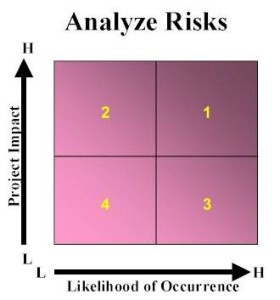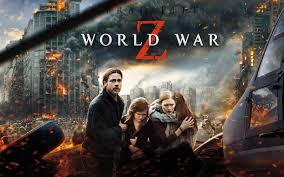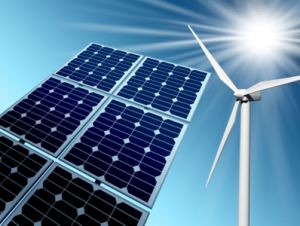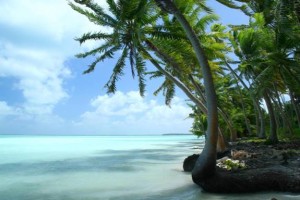If you are considering some level of disaster preparedness for yourself or your family then this article may provide some insights so that you might avoid making a classic Prepper mistake. And if you’re already well on the road to preparedness, this article might be the catalyst for re-working your strategy, supporting tactics and equipment.
From my perspective, the single biggest mistake made by people engaging in disaster preparedness is they follow the wrong advice and adopt a bunch of tactics and related equipment simply because people are chatting/blogging about them. But that’s not how it’s done; you must adopt a survival strategy first, and then comes the tactics, equipment and supplies that support the strategy, not the other way around, as I see done all too frequently by a lot of misinformed people.
The first thing that anyone needs to do is dump all emotion and info based upon trends and pumped-up tactics that are being bantered by some bloggers, and allow pure logic to dictate your actions, especially when it comes to taking the first step, which is the adoption of a disaster survival strategy.
In order to take the first step, you will have to conduct your own due diligence into the actual frequency of occurrence of the various risks that might impact you and your family; this is your disaster preparedness risk analysis. Your risk analysis, which is specific to you alone, should be done in the absence of any sensationalism or incorrect group mentality (doesn’t matter what others are doing); it needs to be based largely on mathematical statistics (how often do things happen in your location and region).
If after you have conducted your personal risk analysis, you find yourself in the camp that believes that large-scale long-term disaster events such as those depicted in; ‘World War Z’ , ‘Book of Eli’, ‘The Road’,’28 Days’ and ‘The Carrington Event’ and similar books and movies are not a reality to be considered, then the disaster survival strategy that will serve you best is one that properly addresses short-term localized regional events such as hurricanes, tornadoes, industrial accidents, floods, earthquakes, local power outages resulting from adverse weather, as well as all the everyday risks related to personal health and safety (http://williamesimpson.com/disaster-preparedness-strategies-will-yours-work), which for the purposes of this article, are assumed to be handled in any proper preparedness strategy.
Finding yourself in this camp of thought will dictate the preparedness strategy and the supporting tactics and equipment that will serve you best. Unfortunately, FEMA’s current advice of 3-days (72 hrs.) worth of water, food and supplies is inadequate for some scenarios.
Concepts that would properly support this strategy may include:
- Having a suitable shelter (or home), with an alternative ‘Bug-Out’ plan. I.E. in the event of tornado you have access to a secure storm shelter; in the event of industrial disaster (dangerous chemicals, radiation, etc), hurricane and flooding, you can utilize pre-prepared ‘bug-out-bags’ to aid you and your family in expediently relocating outside the impact area of the threat. In the case of ‘bugging-out’ underthis situation (short-term horizon), FEMA’s advice for 3-days worth of supplies makes sense (although minimalistic) and can be implemented with a properly provisioned backpack.
- Having adequate water, food, equipment, fuel and supplies for the purposes of sheltering in place. I.E. in the event of a serious winter storm that takes out the electrical power (regionally) possibly affecting municipal water (pipes freeze, break, etc.), you might have a generator (and fuel), method for heating and cooking (wood stove or other suitable system with fuel), at least two-weeks (or more) worth of water and food for the entire family, sanitation provisions (outhouse, Porta-Potty, etc.), and so forth.
In the foregoing exampled (abbreviated) scenarios, most people will fair well as a function of such basic preparedness coupled with the aid that may be forthcoming as needed from areas outside the area that has been affected. In these situations, which are well evidenced and documented in history, the need for extensive weaponry is an unwarranted expense (poor allocation of limited funds). Short-term events usually have limited incidents of violence. Therefore, a basic woodsman’s selection of guns is more than adequate to handle the needs for obtaining game and home defense (Shotgun, pistol, rifle).
On the other hand, those people who have done the calculus and who have studied their history may come to the conclusion that the scenarios that were depicted in the movies previously mentioned are in fact statistically plausible. Some people are aware of how the media intentionally marginalizes potential serious risks so as to avoid panicking the public (or should I say, ‘sheeple’?). The world (including the USA) has in the past been plagued by deadly pandemic disease and large-scale conventional warfare as a minimum, and the frequency of these events is not akin to events such as polar shift, impact by a near-earth objects, eruption of a super volcano or other such scenarios that occur on geologic time-frames (every 10,000 years+), even though such events can and do occur. Unfortunately, most of us don’t have the time and or the money to adopt an all encompassing strategy that can handle any or all of these potential events. Think in terms of Las Vegas odds and the craps table; we want to make our bets with our limited bank-roll where we have a higher probably of an event. The probability for a grid-down event (loss of the entire or large part of the U.S. electrical grid) is much higher than say a ‘polar-shift’ in the course of our lifetimes, so in this example, the smart money is on ‘grid-down’.
If you find yourself in this camp, then your strategy will be considerably different than those people in the former. You will need to adopt tactics, equipment and supplies that are effective in long-term, large scale disasters. Why? First of all, in a large-scale, long-term disaster, nobody is coming to the rescue! That means you have to be in a position to sustain yourself in safety for many months, possibly years.
The concepts that support a strategy for surviving a large-scale long term event are of course more comprehensive than those used by people in the short-term camp, but would allow applications in both short-term and long-term events. And this does make things more expensive, but in the case of disaster preparedness, you may get your money’s worth if you do it right.
- A survival location (preferably your home) that is located such that your exposure to tens of thousands or millions of evacuees is minimized, is the key principal! Far too many people are not locating themselves properly (pre-event) and instead embrace the fool-hearty work-around tactic of attempting to militarize their survival paradigm as a result of adopting (or acquiescing to) the wrong fixed location (your home). If you are forced to ‘weaponize’ your survival paradigm with an arsenal, you arelocated in the wrong spot! If you are located properly, a basic woodsman’s section of guns is more than adequate to handle the long-term needs for obtaining game and home defense (Shotgun, pistol, rifle). Another common mistaken tactic that results once again from choosing the wrong location from the start is; having to bug-out (if you’re not KIA) once you are discovered and overrun during of a crises and becoming an evacuee yourself. When this happens, if you are successful in evading the marauders, you will as a minimum loose the majority of your mission-critical preps, placing you and your family at a severe disadvantage. The choice (or modification from an existing location) of location is the single most important factor that determines your odds for surviving any long-term event.
2. Buying more guns and ammo won’t solve the defects in a bad location; not even a company of U.S. Marines can hold-off wave after wave of hundreds and thousands of well-armed survivors; there will be millions fanning out from cities, and the vast majority of them will be armed: http://en.wikipedia.org/wiki/Number_of_guns_per_capita_by_country. How do I know if my location is good? You can make that determination by drawing a circle around your proposed (or existing) location that has a radius of 500-miles (average range for a vehicle with a full tank of fuel). If there are any major cities or towns within your circle, you’ll likely be overrun and killed.
3. Once a proper location is selected, the next most important consideration is sustainability and assuring a long-term living situation. The right infrastructure, equipment, supplies and permaculture will help ensure long-term survival. Some examples of more critical equipment would be; large-array solar panels (in suitable locations); wind-generators (and/or wind powered mechanical pumps for well water, irrigation) and long-range communications equipment, such as SSB and Ham radio transceivers. However, even with the proper fixed-locations, there are drawbacks related to job availability nearby and relocating away from family and friends. There is another option which may not be for everyone, but may appeal to many, as discussed in #4.
4. One solution to the ‘location’ dilemma is taking-up residence on a large blue-water capable boat. This paradigm (living aboard a boat) is what I call ‘Nautical Prepping’ and is the subject of my book: The Nautical Prepper (http://www.amazon.com/The-Nautical-Prepper-Equip-Survive/dp/1612432204).
The whole concept of ‘Nautical Prepping’ revolves around the use of a boat as your home and shelter, which also houses all your preps and can move away from any ‘perceived’ threat, before that threat manifests (a tactic unique to the paradigm). Unlike people stuck on land in fixed locations, nautical Preppers can leave from an anchorage or a dock (marina) and head for an uninhabited island (or low population density landfall) in equatorial areas within five (5) minutes of suspecting or anticipating a mounting problem. That means that if the grid went down (for instance), while other people are wondering why the lights went out, nautical Preppers will already be well to sea, with no need for any gun-fights or bleeding.
Among other significant long-term survival benefits, equatorial areas that meet the sea are very rich in resources, have great year-round climates, and are also outside the areas that would be most heavily affected by things like radioactive fallout (Northern Hemisphere). As the saying goes, no matter how hard you try, you can’t make a silk purse from a sow’s ear!
At the end of the day, anyone who is considering large-scale long-term disaster preparedness should seriously revisit the issues (risk analysis) related to choosing the right survival location, which if you’re living a prepared lifestyle, should be your home.
Cheers! Capt. Bill
Capt. William E. Simpson – USMM











Western s.c prepping couple ,looking for someone to connect with in order to maximize effective planning and odds. We have an alternative location but think a remote property that an rv could be left on would be the best choice.
I’m trying to figure out where in this country that you could live and not be within 500 miles of a large city? If you find it you obviously don’t have a job. I live in Kansas and its considered in the middle of nowhere yet within 500 miles is Wichita, KC, OKC, Tulsa, Omaha and Denver would be close.